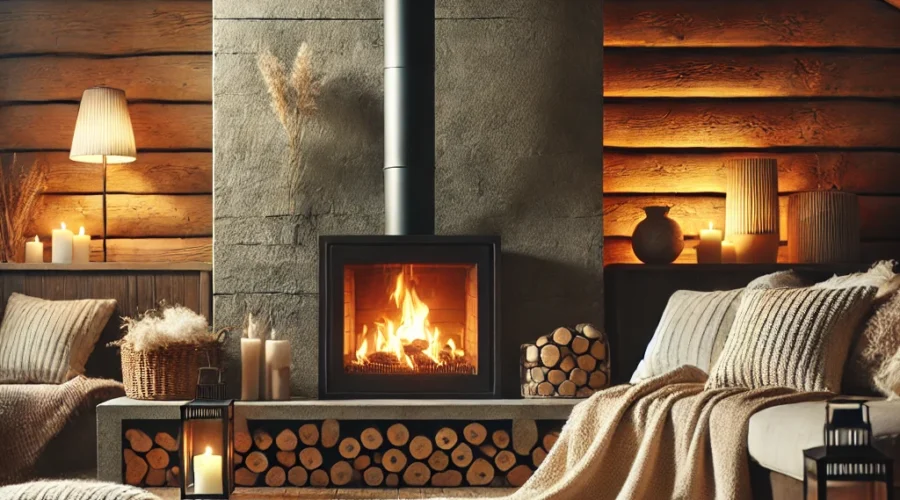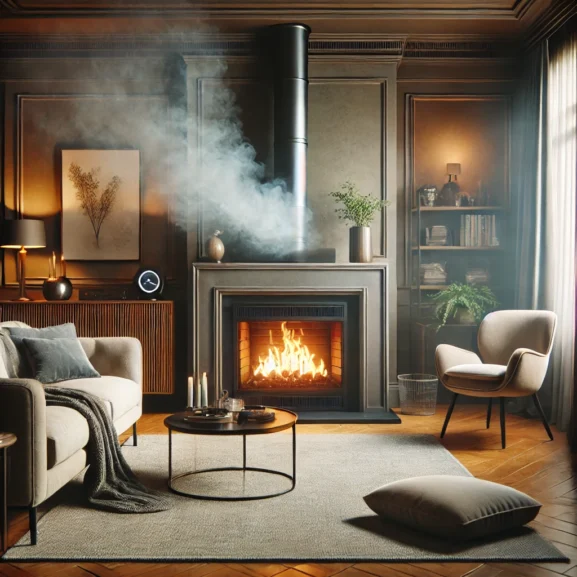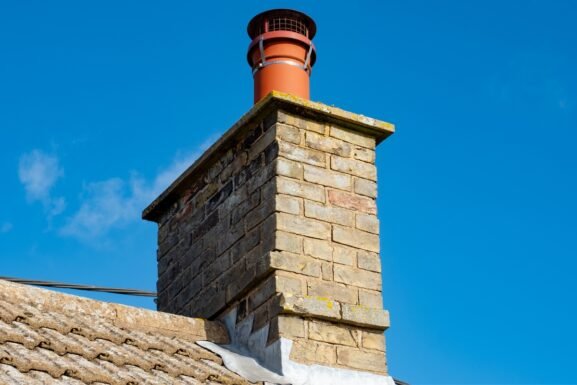How to Stop Drafts Entering Homes Through Chimney Gaps: Tips for a Cozy Living Space
Ever wondered why your living room feels drafty even when the windows are shut tight? The culprit might be lurking right above us—our chimneys. Chimney gaps are easy to overlook. But they can let drafts into our homes. This can make our living spaces uncomfortable. We should pay attention to these gaps to keep the warmth inside. These sneaky drafts not only make us uncomfortable but also drive up our heating bills.
In this text, we’ll explore how these drafts find their way through chimney gaps and what we can do about them. Understanding the problem is the first step toward a cozy, energy-efficient home. So, let’s jump into the world of chimneys and uncover how to seal those pesky gaps once and for all.
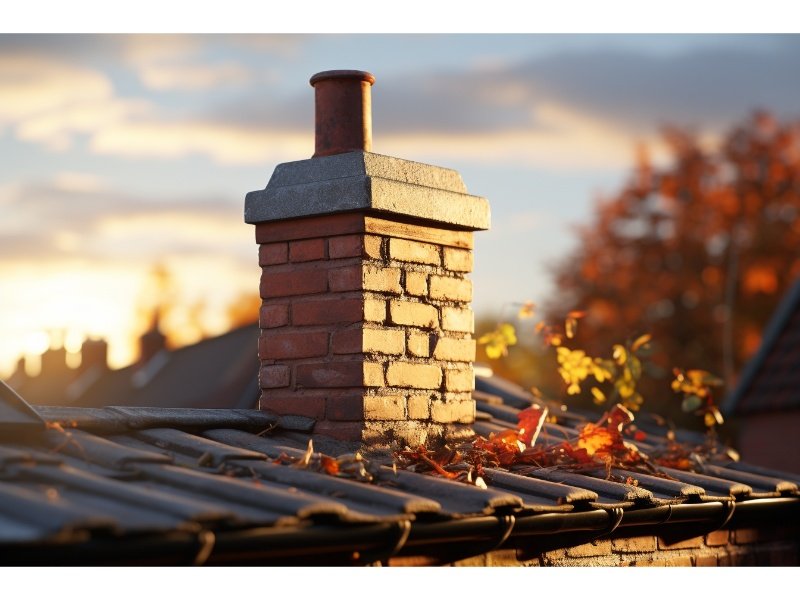
How Chimney Drafts Work: A Complete Guide
Understanding chimney draft issues helps prevent drafts and boosting home comfort. The principle is simple. Warm air from the fireplace rises. This can cause suction, pulling in cold air through gaps in the chimney seals. This energy loss from chimney drafts can be frustrating. In areas where winters are cold, it’s important to keep homes warm.
Air leaks around chimneys lead to fireplace draft problems. Common culprits? Deteriorated seals and poorly fitted chimney caps. Sealing gaps in your chimney helps keep the right amount of heat in. It also stops cold air from coming through. This way, you can enjoy your Netflix binge without interruptions.
- Identify Gaps: Check for worn seals around chimney edges. Professional inspections spot issues invisible to the naked eye.
- Install Draft Guards: Use guards designed specifically for fireplaces. These simple tools boost fireplace efficiency improvement.
- Consult Experts: Repairs aren’t DIY territory! Certified professionals know the right draft prevention methods and materials.
Chimney maintenance requires special attention in weather-sensitive areas. Cold snaps can worsen existing gaps, leading to higher heating bills. Need help? Reach out to experts for a consultation.
For more chimney safety tips, visit the National Fire Protection Association.
Identifying Draft Entry Points
Detecting drafts through chimney gaps can save money on heating and reduce discomfort. Understanding where air leaks occur helps in preventing drafts effectively.
Signs of Drafts in Your Home
Drafts might seem sneaky, but they leave quite a trail:
- Fluctuating temperatures: Fluctuating temperatures in your home can be frustrating. If one room feels like a sauna and another like an icebox, drafts might be the problem. Drafts can cause uneven temperatures. They let warm air escape and cold air enter. This can make it hard to keep your home comfortable.
- Increased Energy Bills: More dollars flying out the window with cold air? Not awesome.
- Whistling Sounds: Funny how air leaks around chimneys sound like a whisper, not a song.
- Visible Gaps: Seeing daylight through seals? We’ve got a drafty problem.
Common Chimney Gap Issues
There are several factors that cause fireplace draft problems. This is especially true in cold places.
- Deteriorated Chimney Seals: They wear down fast and can let in cold air through the chimney.
- Improper Chimney Caps: A cap not fitting well allows rain and drafts to join the party uninvited.
- Shifting Structure: Earth’s movements might create chimney draft issues in older homes.
- Poor Chimney Maintenance: If neglected, gaps in chimney seals and energy loss become more likely.
Causes of Chimney Gaps
Chimney gaps can lead to drafts. These drafts let cold air enter your home. As a result, your fireplace works less efficiently. Knowing the causes helps in preventing drafts effectively.
Structural Shifts and Settling
Sometimes, houses shift. It might seem like they’re dancing the cha-cha, but that’s not the case. Structural settling can actually cause gaps in chimney seals. Homes experience more shifting due to soil and weather changes. These tiny movements create openings where cold air enters.
Even small structural shifts lead to big energy loss from chimney drafts. If these gaps appear, sealing chimney gaps is vital to improving fireplace efficiency. Our team is always ready to help!
Weather and Environmental Effects
Weather plays tricks on chimneys. Rain and snow cause wear, making seals weaker over time. When seals deteriorate, air leaks around chimneys occur, resulting in fireplace draft problems.
Environmental factors in colder regions worsen the situation. Reach out to professionals for a consultation to help combat these pesky air leaks.
Solutions for Chimney Drafts
Drafty chimneys can lead to chills, mysterious whistles, and higher energy bills. Our goal is to make living rooms cozy again. Let’s jump into ways to seal those pesky chimney gaps.
Sealing Gaps and Cracks
Sealing chimney gaps involves identifying and addressing air leaks around chimneys. These gaps can cause significant energy loss. We use special sealants for your chimney. These sealants can handle all weather conditions. They keep cold air from getting in. Regular inspections help spot potential gaps early, ensuring a draft-free home. For stubborn gaps, we recommend professional evaluation to improve fireplace efficiency. Reach out to experts for a consultation for a consultation on sealing chimney gaps.
The Chimney Safety Institute of America provides guidelines on choosing the right materials for sealing. For homeowners, addressing shifts from soil and weather changes is crucial. We jokingly say, don’t let your home ‘breathe’ too much during those snowy months!
Chimney Caps and Dampers
Chimney caps and dampers are vital in preventing drafts. Properly fitted caps block debris and critters while reducing gaps in chimney seals. Dampers act like a door, closing snugly when the fireplace isn’t in use. If you notice cold drafts even with a cap, it’s time to check the fit. We install chimney draft guards to enhance efficiency and draft prevention methods.
For humid areas, maintaining caps and dampers ensures they don’t rust or warp. Consulting certified professionals aligns with best practices, avoiding common fireplace draft problems. Approved professionals help tackle energy loss from chimney drafts. Don’t wait to winterize your home, call us to keep it warm and efficient.
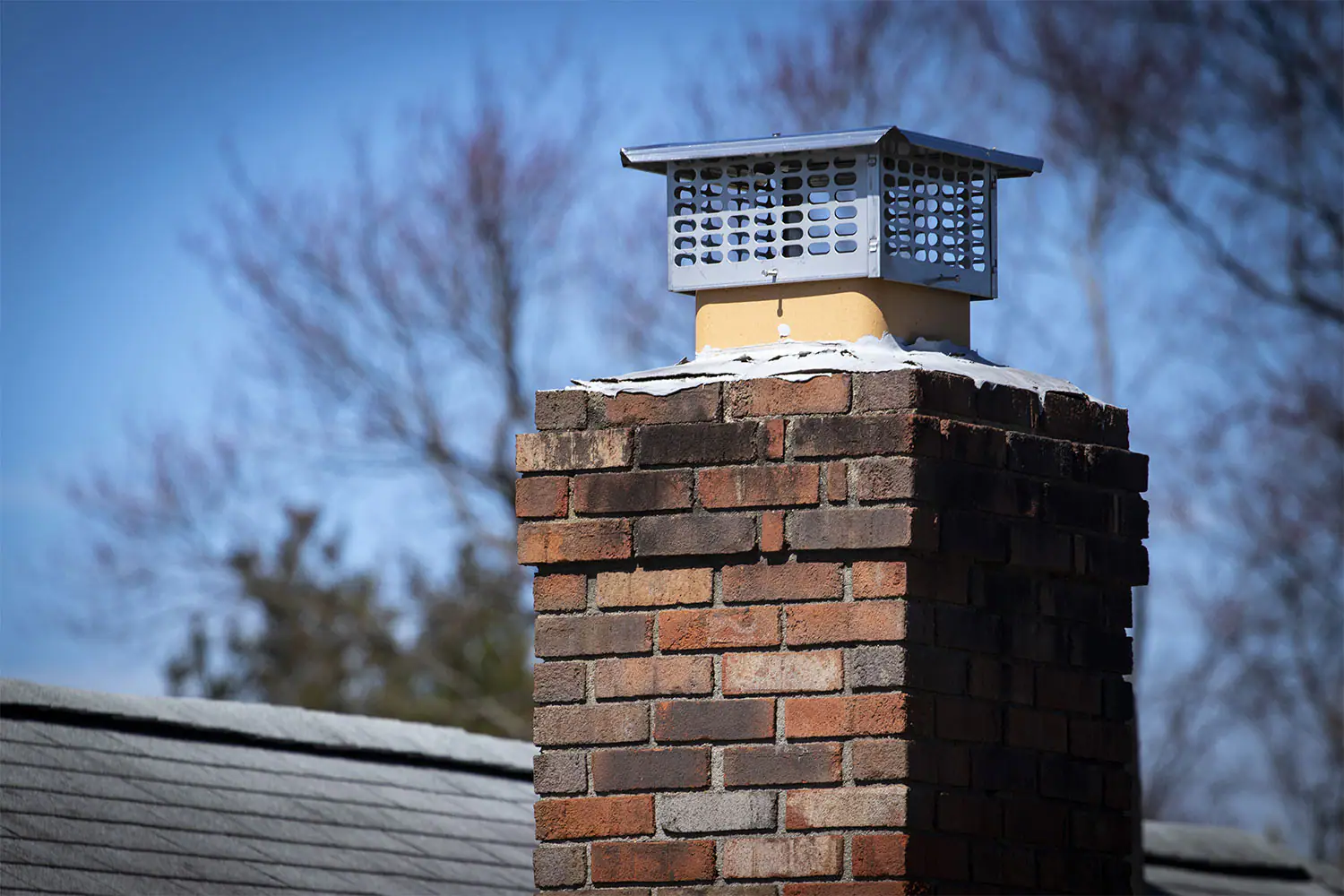
Benefits of Fixing Chimney Gaps
Fixing chimney gaps goes beyond just keeping the cold air out. It provides a warm welcome of efficiency and comfort when drafts no longer sneak into our homes. Let’s uncover two key benefits when sealing those pesky leaks.
Improved Energy Efficiency
Addressing gaps in chimney seals significantly boosts energy efficiency. By stopping drafts, we reduce energy loss from the chimney. This helps keep the warm air inside. Homeowners notice a drop in heating bills since they aren’t paying extra to heat the chilly air. Consider the following:
- No more battling an army of invisible cold armies that drive up your energy bills.
- Sealing chimney gaps ensures the fireplace operates at maximum efficiency.
Enhanced Indoor Comfort
Fixing those chimney draft issues leads to a snugger living space. Without cold air sneaking in through chimney gaps, rooms maintain a consistent temperature. No more layering up like you’re questioning the thermostat’s loyalty.
- As winter warriors know, blocking air leaks around chimneys helps a lot. It makes a big difference in keeping the cold out and the warmth in.
- Improved comfort supports a cozy home and a happier family.
Effective Solutions for Reducing Chimney Drafts and Lowering Energy Bills
Addressing chimney drafts is important for keeping our home cozy and energy-efficient. Sealing gaps and taking care of our chimneys can help reduce energy loss. This can also lower heating costs. We shouldn’t forget the value of regular inspections and professional checkups. They make sure our chimneys stay in good shape. With the right solutions, we can have a warmer home and lower energy bills.
Frequently Asked Questions
What causes drafts in a living room with a chimney?
Drafts in living rooms with chimneys are often caused by gaps. These gaps let cold air in. Warm air rises from the fireplace, creating suction. This suction draws cold air through the gaps. As a result, energy is lost, and discomfort increases, especially in colder climates.
How can sealing chimney gaps improve energy efficiency?
Sealing gaps in the chimney helps reduce energy loss. It stops cold drafts from entering. This can lower your heating bills. Proper seals make your fireplace work better. They create a more comfortable and energy-efficient home.
What are common signs of chimney drafts in a home?
You may notice signs of chimney drafts if the room temperature changes a lot. Your energy bills might also go up. You might hear whistling sounds near the chimney. Look for visible gaps in seals or chimney caps too.
How do structural shifts affect chimney drafts?
Structural shifts can create gaps in chimney seals. This allows cold air to get in. These shifts happen more often in areas with big changes in soil and weather. As a result, energy is lost, and heating costs go up.
What solutions are recommended for sealing chimney gaps?
We recommend using weather-resistant sealants. These will help protect your chimney. Regular inspections are important too. Keeping your chimney caps and dampers in good condition is essential. It’s also a good idea to consult certified professionals. They can evaluate and repair your chimney when needed.
Why is chimney maintenance important in colder regions?
In colder regions, chimney maintenance is very important. It helps prevent drafts and keeps heating costs down. The weather can weaken seals and make gaps worse. That’s why regular inspections and repairs are essential. They ensure a cozy and energy-efficient home.
How can I find professional help for chimney repairs?
To get professional help, consider consulting certified experts for evaluations and repairs. The Chimney Safety Institute of America and the National Fire Protection Association provide resources. They also offer contacts for safe and effective chimney solutions.
